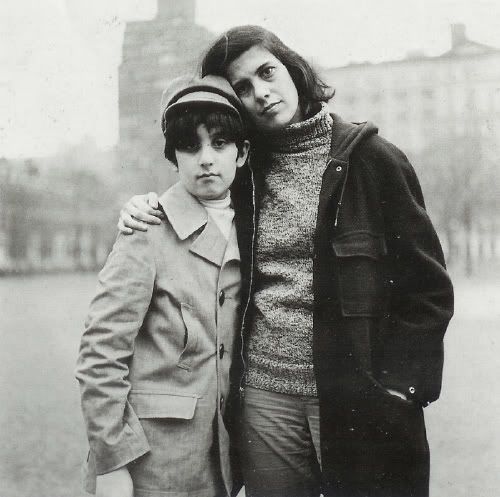ALESSIA PIERDOMENICO/REUTERS
Writer Susan Sontag resting in a garden in Rome in 2003, the year before she died
"I intend to do everything ... I shall anticipate pleasure everywhere and find it too for it is everywhere! ... everything matters!" So wrote 16-year-old Susan Sontag in 1946. One of the finest American writers, thinkers, and political activists of the past four decades, Susan Sontag led a rich and creative life. Her opinions would anger and impress critics in equal measure.
Now, four years after her death, her personal diaries are to be published, unveiling an intimate portrait of her early life and her much talked- about sexuality.
The diaries will be released in three instalments, starting next January with Reborn: Early Diaries, 1947-1964, published by Penguin. They were compiled by her only child, the author and academic David Rieff, and will reveal previously unknown aspects of the writer's life.
Although it was common knowledge that Sontag was bisexual – most famously noted by her relationship with the photographer Annie Leibovitz – she never spoke frankly about her bisexuality in public.

The publication of her diaries for the first time, beginning when she was just 14, reveals an intimate portrait of her sexual encounters with women two years later. In the passages, Sontag alludes to her sexuality at the age of 15: "I am very young, and perhaps the most disturbing aspects of my ambitions will be outgrown ... so now I feel I have lesbian tendencies (how reluctantly I write this)."
Aged 16, she writes of her first sexual encounter, with a woman only referred to as "H", to protect her identity: "Perhaps I was drunk, after all, because it was so beautiful when H began making love to me .... It had been 4:00 before we had gotten to bed ... I became fully conscious that I desired her, she knew it, too...."
Speaking from his home in New York this weekend, Mr Rieff spoke of the difficulties he had with publishing such frank and personal material. "It was a difficult decision for me to make and my reasons are that I didn't have much choice given the fact that she chose to sell the papers to the University of California. So later, down the line, editions of it would inevitably be published, so I would rather do it myself .... I certainly made every effort in the editing not to cut anything on the basis of my being uncomfortable with it, and not to cut anything my mother might have preferred the world not to know."
The diaries demonstrate Sontag's appetite for literature and list making. In the first couple of entries in the diary, Sontag has already devoured works by André Gide and Rainer Rilke. "She was a prodigy and she had a prodigy's appetite. Those of us who are not prodigies, like myself, it takes longer to read the amounts she read," said Mr Rieff. "I do think that the interest of this book to the readers is about somebody creating themselves, that's one of the reasons I included so many of her lists ... there were many more ...."
Mr Rieff also spoke of how similar Sontag's teenage persona was to the mother he later knew. "I don't think she changed that much – that was one of the things that struck me most when I was reading the diary. Her curiosity and voraciousness are there, I don't think that was any different when she was 15. She was remarkably the same in that sense."
Sontag died in New York on 28 December 2004, aged 71, from complications of myelodysplastic syndrome. It had evolved into acute myelogenous leukaemia. She is buried in Montparnasse Cemetery in Paris.


No comments:
Post a Comment